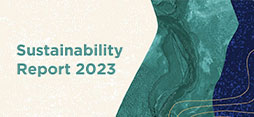15 June 2015
Coal – the Hard Facts
From Minerals Council Australia – Monday 15 June 2015
When it comes to the future for coal, rely on the facts. These are the Coal Hard Facts.
1. DEMAND FOR COAL IS STRONG
Over the last decade, coal use has grown more strongly than any other energy source. The demand for both metallurgical and thermal coal is increasing as highly populated emerging
economies urbanise and industrialise. In 2019 the world will use 1 billion tonnes more coal than today – more than 9 billion tonnes a year. By 2040, the global coal trade will increase by 40 per cent.
2. CHINA & INDIA ARE NOT SHUNNING COAL
China will consume more coal than the rest of the world over the next two decades. Demand may plateau in the 2020s, but China’s coal imports will still be higher than today in 2040. The International Energy Agency says ‘China will be the coal giant for many years in the future.’ Indian coal demand is also increasing. India will overtake China as the world’s largest importer
of coal in 2025, with exports more than tripling by 2040. There is currently 113 GW of coal-fired generation capacity under construction or approved – an amount twice Australia’s total capacity today.
3. WORLD ENERGY DEMAND CAN’T BE MET WITHOUT COAL
World primary energy demand will increase by 37 per cent between 2012 and 2040. Under all climate action scenarios, coal remains an important part of the global energy mix. There is no credible scenario in which all coal reserves remain in the ground.
4. COAL IS ESSENTIAL FOR THE MANUFACTURE OF STEEL AND CEMENT – & DEMAND IS GROWING
Energy and steel consumption in emerging economies has grown rapidly in the past decade but many of these countries still use much less energy and steel than advanced economies. For
example, China’s rail network is still one-third that of the United States and one-sixth of the European Union despite its larger land mass and population.
Moreover, it is not possible to build a wind turbine without coal. There is more than 220 tonnes of coal in every wind turbine.
5. AUSTRALIA DOESN’T HAVE TO CHOOSE BETWEEN COAL & A LOW-EMISSIONS FUTURE
High efficiency, low emissions (HELE) coal-fired generators emit 20-25 per cent less CO2 than the average of existing power stations and up to 40 per cent less than the oldest technology in place. With carbon capture and storage (CCS), a 90 per cent reduction in emissions can be achieved. This technology is working now:
- CO2 emissions from modern ultra supercritical coal plants are comparable with those from open cycle gas fired generation.
- There are 13 large-scale CCS projects in operation around the world capturing 40 million tonnes of CO2 a year
- Canada’s SaskPower launched the world’s first commercial scale, coal-fired power plant with CCS in 2014. It injects 90 per cent of the CO2 emissions produced
6. LOW EMISSION COAL TECHNOLOGY IS BEING DEPLOYED IN AUSTRALIA
Since 2007, the Australian coal industry has committed more than $300 million in a range of projects, with tens of millions of dollars more. Projects supported by the industry have successfully captured CO2 at a coal-fired power plant at Callide in Queensland’s Bowen Basin, sequestered 65,000 tonnes of CO2 in a depleted gas field in Victoria’s Otway Basin and intensified the search for storage sites for future CCS projects with exploration work underway or planned in Queensland, New South Wales, Victoria and Western Australia.
7. COAL WILL REMAIN A SOUND INVESTMENT
Coal remains a sound investment, with banks continuing to lend to new and existing projects. Global financing for coal mining rose to US$66 billion in 2014, up from US $55.28 billion
in 2013 and a 360 per cent increase from 2005. Anti-development activists want investors to divest their holdings of fossil fuel assets. Analysis by Rice Warner Actuaries found that ‘socially responsible’ superannuation investment options (including those that screen out fossil fuels) tend to cost more in management fees and deliver less in net long-term returns than conventional funds.
8. COAL WILL CONTINUE TO UNDERPIN AUSTRALIA’S PROSPERITY
Coal is Australia’s second largest export. It contributed $40 billion to national income in 2013-14 and will contribute $47 billion a year by 2019-20.
Coal mining employs 45,800 people directly and supports the jobs of another 123,660. The industry paid $3.1 billion in royalties last financial year – $1.8 billion in Queensland, $1.3 billion in New South Wales. Over the four years, black coal royalties will total $18.1 billion – $11.3 billion in Queensland, $6.8 billion in New South Wales.
9. THE AUSTRALIAN COAL INDUSTRY DOES NOT RELY ON SUBSIDIES
The Productivity Commission’s independent analysis of government assistance found ‘The estimated effective rate of assistance from tariff and budgetary assistance for mining has been negligible.’ At a global level, the International Monetary Fund has found that just 1.25 per cent of so-called ‘fossil fuel subsidies’ are directed to the coal sector.
10. COAL IS ALLEVIATING GLOBAL POVERTY
Between 1990 and 2010, about 830 million people – the vast majority in developing countries – gained access to electricity due to coal. Twice as many people gained electricity from coal as natural gas and for every person who obtained electricity from non-hydro renewable sources such as wind and solar, about 13 gained access due to coal.
Affordable, reliable energy is a precondition for economic growth and an escape from poverty. The cheapest, fastest way to provide that electricity is through cheap, modern, lower emissions coal generation power.
Microsoft founder Bill Gates has stated that poor nations ‘desperately need cheap sources of energy now to fuel the economic growth that lifts families out of poverty. They can’t afford today’s expensive clean energy solutions, and we can’t expect them wait for the technology to get cheaper.’18
Categories:
Industry news Whitehaven coal
Whitehaven coal

